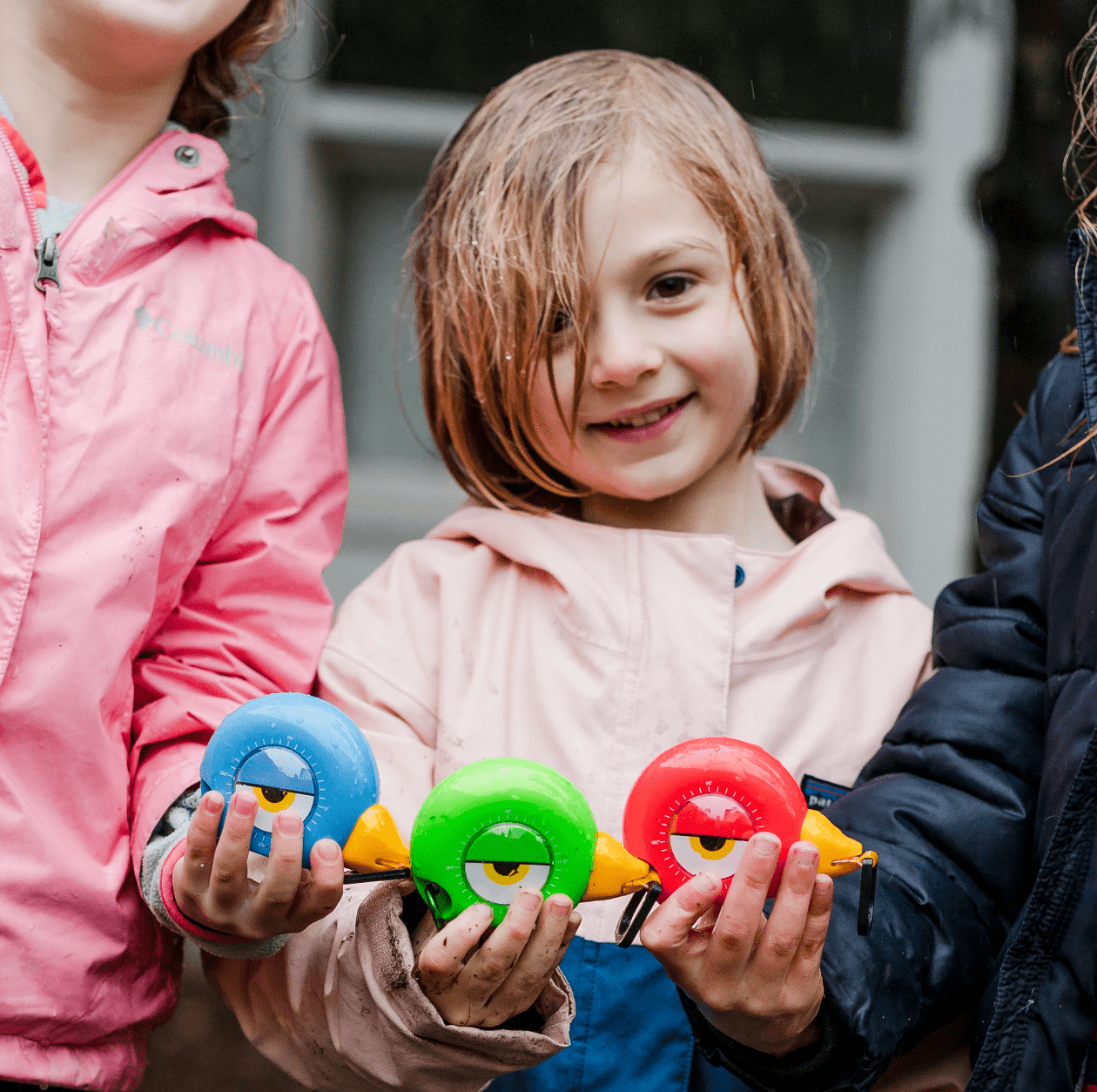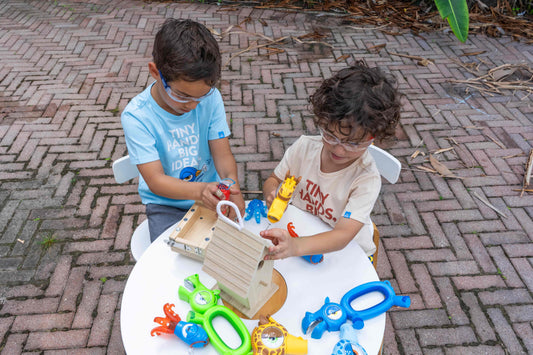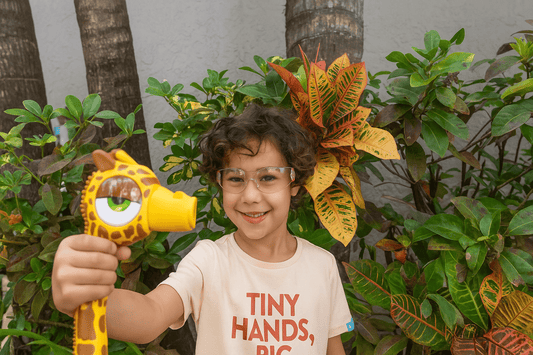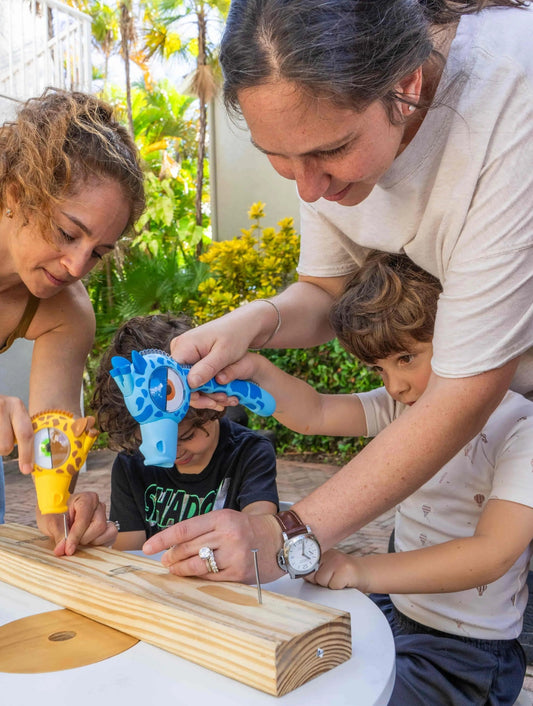
How to Teach Kids About Tool Safety Without Making It Scary
The best way to teach kids about tool safety (children's safety glasses, head gear, gloves, etc) is to make it part of the fun, not a fear. When children are introduced to personal protective equipment (PPE) and safe habits through hands-on, positive experiences, they gain skills and confidence that last a lifetime.
Parents and caregivers can turn every DIY project into a chance to build both creativity and responsibility. Here’s how to teach tool safety the calm, encouraging way:
Start with Safety Gear That Fits
Kid-sized PPE is essential. Goggles that slide off or gloves that are too big can be frustrating and unsafe. Choose child-appropriate gear like:
- Shatter-resistant children’s safety glasses
- Light, flexible work gloves
- Soft knee pads
- Ear protection for loud tools
When PPE fits right, kids feel more capable and excited to participate. Let them pick their favorite colors or decorate their gear with stickers, anything that makes them feel like a real part of the team. Children’s safety glasses that come in fun colors or with character designs can make wearing them a joy. For more tips on selecting safe equipment, refer to HealthyChildren.org's guide on How to Buy Safe Toys.
Explain the Why Without Fear
Use simple, positive language to explain each safety item. Instead of saying, “This could hurt you,” say:
- “These safety glasses keep your eyes safe from flying bits.”
- “Gloves protect your hands so you can build more.”
Keep the tone calm and confident. Avoid fear-based instructions. The goal is to create awareness, not anxiety. You can even turn explanations into little stories, like how safety glasses are superhero shields for your eyes.
Lead by Example
Children mirror adult behavior. Wear your own PPE and follow safety steps consistently. Let your child see you checking tools, tidying the workspace, and respecting safety gear. Modeling builds trust and sets the standard.

If you treat safety like second nature, your child will too. Try narrating your actions: “I’m putting on my safety glasses so I don’t get dust in my eyes.”
Practice Through Play
Start with low-risk, supervised tasks like measuring, holding tools, or hammering soft materials. Practice how to handle tools properly and where to place them when not in use. Repetition builds habits, and playful repetition makes them stick.
Use soft wood or foam boards for beginners. Practice sessions can be short but consistent. Include mini challenges or DIY missions to boost excitement and focus. If you’re looking to build a daily rhythm, check out our guide on How to Create a DIY Activity Routine for Kids. Make sure children’s safety glasses are part of every mission, even during pretend play.
Create a Safe Workspace Together
Teach kids how to set up a project zone:
- Clear clutter before starting
- Keep sharp tools in a special "grown-up" area
- Use a sturdy surface for all building tasks
Give them their own mini tool caddy or safe zone to organize, reinforcing responsibility. Let them help sweep up or organize scraps at the end, it teaches care and completion. Reinforce the habit of wearing safety glasses whenever they enter the workspace.
Celebrate Smart Choices
Acknowledge every safety win. Say things like:
- “I noticed you put your safety glasses on first. Awesome work!”
- “You remembered to ask before using the screwdriver. That’s how builders think!”
This builds self-esteem and encourages kids to keep safety top of mind. Consider using a sticker chart or small rewards to mark progress and milestones. Bonus points for every time they remember their children’s safety glasses!
Keep It Age-Appropriate
Match the tools and projects to your child’s skill level. Handyfamm tools are specially designed for kids with real safety in mind. If you’re wondering which tools are best for your child’s age group, here’s a helpful breakdown of the 5 Essential Tools for Every Kids’ DIY Kit. Avoid sharp or motorized tools for beginners. Gradually introduce new challenges as they show readiness.
Also, make sure your child knows it's okay to ask questions or say they feel unsure. A confident builder is one who knows when to pause and check. A confident builder is one who knows when to pause and check. Child development experts highlight how supervised tool use supports emotional and cognitive growth.
By weaving PPE and tool safety into every DIY moment, you're helping your child build more than projects, you're helping them build lifelong habits. Safety doesn’t have to be scary, it can be empowering, fun, and even a little bit magical. And children’s safety glasses? They’re the perfect first step.





 https://handyfamm.com
https://handyfamm.com